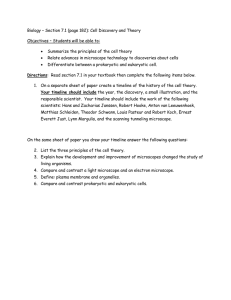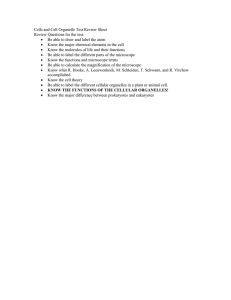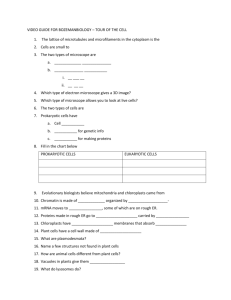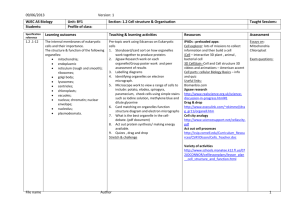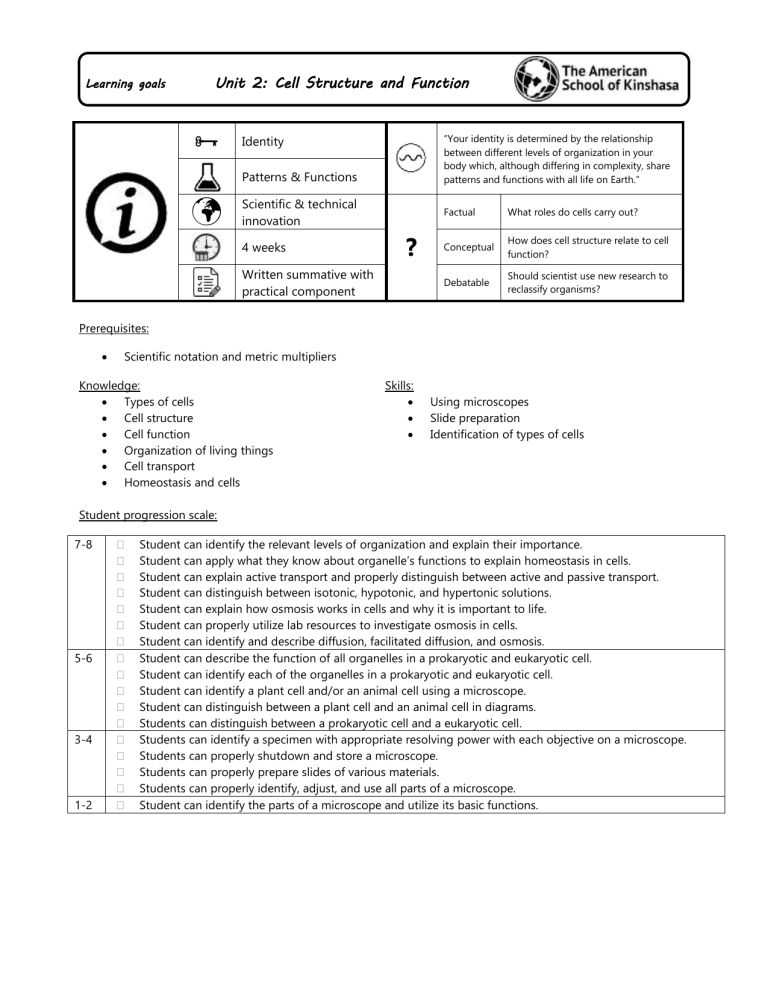
Learning goals Unit 2: Cell Structure and Function “Your identity is determined by the relationship between different levels of organization in your body which, although differing in complexity, share patterns and functions with all life on Earth.” Identity Patterns & Functions Scientific & technical innovation 4 weeks ? Written summative with practical component Factual What roles do cells carry out? Conceptual How does cell structure relate to cell function? Debatable Should scientist use new research to reclassify organisms? Prerequisites: Scientific notation and metric multipliers Knowledge: Types of cells Cell structure Cell function Organization of living things Cell transport Homeostasis and cells Skills: Using microscopes Slide preparation Identification of types of cells Student progression scale: 7-8 5-6 3-4 1-2 Student can identify the relevant levels of organization and explain their importance. Student can apply what they know about organelle’s functions to explain homeostasis in cells. Student can explain active transport and properly distinguish between active and passive transport. Student can distinguish between isotonic, hypotonic, and hypertonic solutions. Student can explain how osmosis works in cells and why it is important to life. Student can properly utilize lab resources to investigate osmosis in cells. Student can identify and describe diffusion, facilitated diffusion, and osmosis. Student can describe the function of all organelles in a prokaryotic and eukaryotic cell. Student can identify each of the organelles in a prokaryotic and eukaryotic cell. Student can identify a plant cell and/or an animal cell using a microscope. Student can distinguish between a plant cell and an animal cell in diagrams. Students can distinguish between a prokaryotic cell and a eukaryotic cell. Students can identify a specimen with appropriate resolving power with each objective on a microscope. Students can properly shutdown and store a microscope. Students can properly prepare slides of various materials. Students can properly identify, adjust, and use all parts of a microscope. Student can identify the parts of a microscope and utilize its basic functions. Formative assessment: Quiz: Microscope and cell function Homework: Cell structure Practice slide preparation Summative assessment: Written test with practical component

